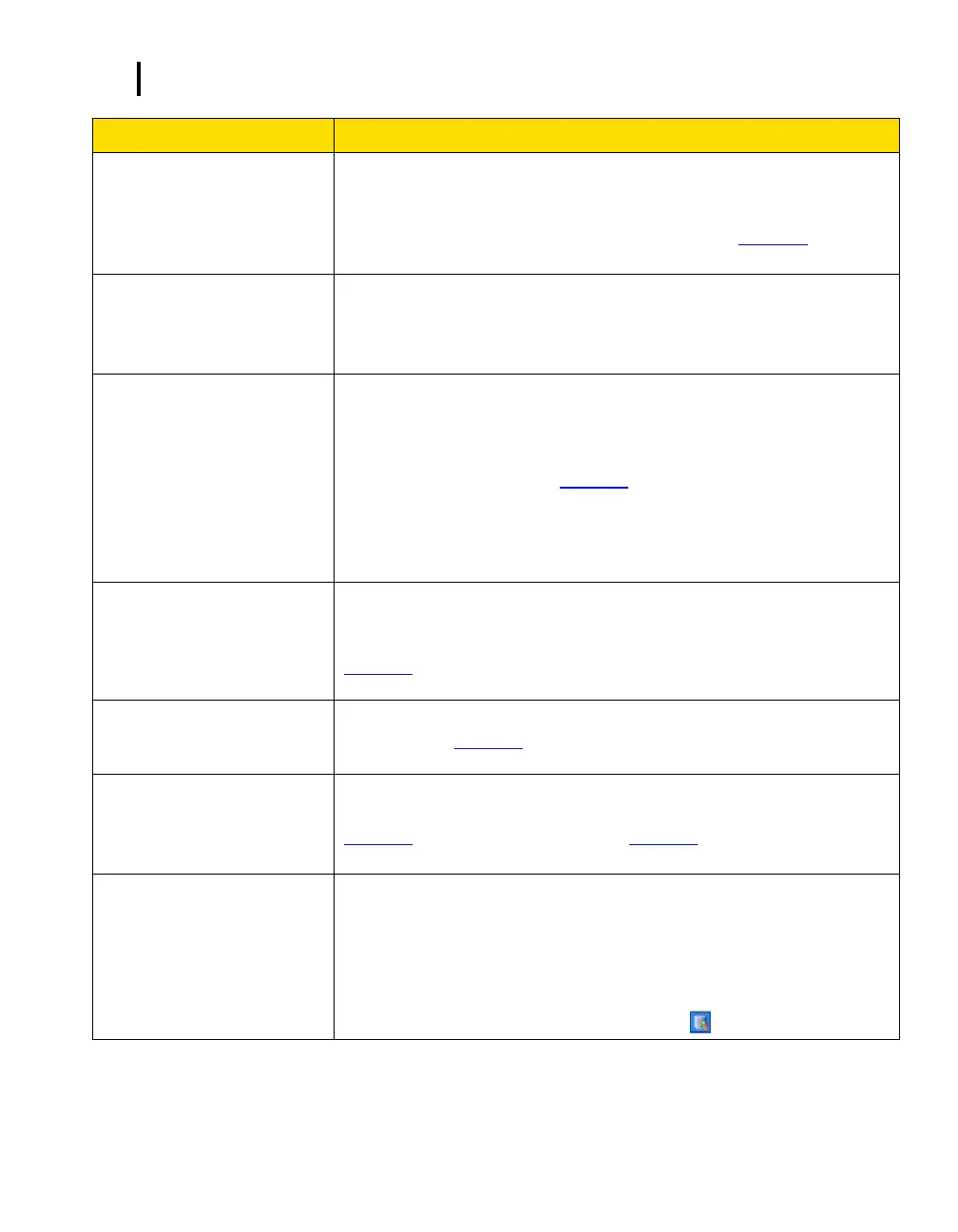152 Appendix D
Particulate Measurements
EVM Series User Manual
6. How do I know when to
clean the optical
engine/photometer?
The following conditions may occur: (1) If calibrating the particulate (PM)
sensor and it will not zero, this indicates the optical engine will need cleaning.
(2) The instrument is exposed to oily or wet mists. (3) The readings are falling
lower and lower indicating the mirror is dirty. (Please see Chapter 7 for details
on cleaning and maintenance.)
7. How is the EVM-7 and
EVM-3 calibrated in the
factory?
Each instrument is factory calibrated to the ISO 12103-A2 Fine (Arizona Road
Dust). A factory calibration is conducted with a “golden” instrument that is
calibrated using a certifiable gravimetric sample. TSI Incorporated
recommends a yearly factory calibration.
8. Do I need to calibrate
before I run real-time
particulate
measurements?
Yes, it is recommended to perform a zero calibration in each environment you
will be measuring particulates. To perform a zero calibration, ensure that the
zero filter/HEPA filter is attached, the impactor is well greased, and the turret is
set to PM. Then, using the keypad navigate to Calibrate>PM screen and
perform a zero calibration (see Chapter 4 for specific details). NOTE: A zero
calibration may be used when performing area-survey monitoring. However, if
you are testing in accordance to NIOSH0600 or if you want to measure the
actual mass concentration in a specific environment, you would run a
gravimetric calibration to determine a correction factor referenced to the ARD.
9. When test collecting real-
time particulate
measurements for a period
of time, how do I verify the
calibration?
First, ensure you performed a zero calibration prior to your testing (with the
supplied Zero/HEPA filter). Run your real-time particulate measurements.
Then, perform a Calibration (PM) Verify via the Verify soft key/quick key (see
Chapter 4 for specific details.)
10. What if I need to calibrate
particulates in accordance
to NIOSH0600?
A gravimetric calibration is performed. The steps below outline a gravimetric
calibration (see Chapter 4 for specific details).
11. How many correction
factors can be stored on
the monitor and in DMS?
The EVM supports 8 different particulate matter (PM) configurations/profiles
with customized name settings and user correction factor settings. See
Chapter 3 for instrument profile set-up or Chapter 6 for DMS set-up for more
details.
12. What if I want to enter in
the correction factor after
running/logging particulate
measurements?
You can adjust/change the correction factor in Detection Management
Solutions (DMS) after the session has been downloaded. The Dust Correction
Override feature is a type of scaling factor that will re-calculate the data
instantly in the chart or graph you are viewing. (NOTE: The Dust Correction
Override field is displayed in the General Data panel and is applied to the dust
measurements in the logged data chart/table when dust is the selected
parameter. To apply, select the dust override icon and add a new value.)

